
You are reading the older HTML site
Positive Feedback ISSUE
may/june 2008
bel canto
CD-2 player/transport and e.One Dac3 DAC
as reviewed by John Potis
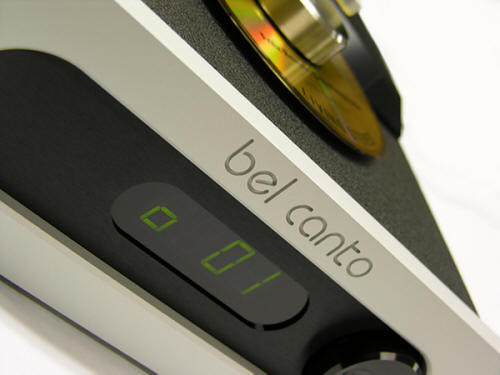
|
It's no secret; I'm a Bel Canto fan. I started with their DAC1 digital-to-analog converter and upgraded to the Dac2 years ago. Their Pre2p has been my reference in full-function preamplifiers for better than three years and a couple years ago I gave out the first ever 6moons Lunar Eclipse award for an electronic component to their e.One REF1000 Mono power amplifiers and they remain my solid-state amplifiers of choice today. Nothing even close to their price point has offered a challenge to these brilliant amplifiers. What's more, I like their gracious styling and solid build. So when the Dac3 came about I wanted to hear it and I requested a review sample. Some months after its arrival, Bel Canto introduced the CD-2 and I enquired about getting one and perhaps doing the review of both pieces bundled together. I was very pleased when Bel Canto was amenable to my request. However, demand for the CD-2 has been strong and I waited almost eight months before finally receiving it. I wasn't fretting though. I had the Dac3 here and it's been a great piece. A couple months ago the CD-2 finally arrived and at long last it's time to get on with it.
CD-2 - the inside story
Bel Canto says that it was inspired by the performance and design of their latest DAC—the Dac3, to design a transport that would be fully synergetic. They started with a chassis that matched that of the DAC ensuring that both components could be used on a single equipment shelf. Inside the new transport they chose the Phillips CD-Pro2LF drive to, according to Bel Canto, "ensure error fee recovery of all CD data". The CD-Pro2LF is the latest incarnation of the classic CD Pro2 design, a descendant of the CD PRO transport used in my own Accustic Arts Drive 1 transport, which has been providing glitch-free performance for going on four years. The CD-Pro2LF uses a single-laser linear-tracking mechanism mounted to a heavy die cast aluminum frame. Choice of the CD-Pro2LF is said to insure long life and error-free operation with optimum data recovery from all CD sources. The mechanism is mounted on a compact yet relatively massive and heavily damped chassis and uses a custom machined centering cone and magnetic clamping mechanism to further dampen vibration. The top loading mechanism and open architecture insures ease of operation. The CD-Pro2LF is a modular CD mechanism that utilizes a 2-stage radial servo, a three spot laser system, a die cast frame, an advanced sledge guidance system with two shafts and a side plate, and an optical pick-up unit with a holographic light-path including the focus and radial actuators. The Disc motor runs on DC and the turntable utilizes magnetic clamping via the included magnetic puck. The Sledge motor uses a gearwheel transmission and the design is said to offer high performance audio and video applications, though the CD-2 is designed for Redbook CD only. While the Pro2LF supports double speed operation via the highly accurate sledge control, the CD-2 is specified for single speed playback. Bel Canto says that the heart of the CD-2 (like the Dac3) is the Bel Canto Ultra-Clock™ that is said to be an extremely accurate and low jitter clock coupled with the latest generation of Asynchronous Sample Rate Converter (ASRC) to produce a 24 bit/96 kHz data-stream for feeding both the internal DAC and the digital outputs. The data-stream is said to be extremely low-jitter as it feeds external and internal DACs with high audio quality. The combination of CD-2 and Dac3 is said to achieve optimum performance through the cascaded effect of multiple ASRC and Ultra-Clock™ stages.
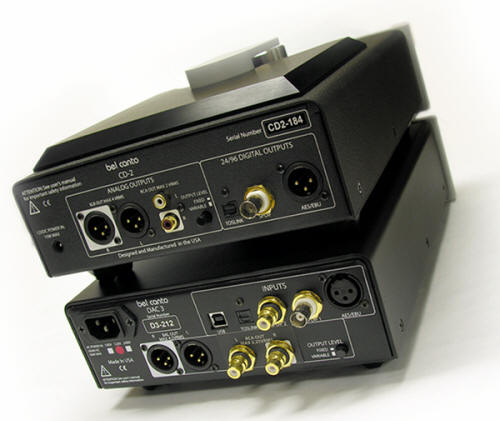
Designed as a transport as well as a stand-alone player, the CD-2 utilizes DAC performance enhanced by the Ultra-Clock™ circuitry. This internal DAC may be set for 24/192 operation if the analog outputs are used—which disables the digital outputs. This is said to allow the best performance from the 112dB dynamic range of the internal circuitry. Balanced 4Vrms output allows direct drive of an amplifier for a simple high performance playback system. In fact, both the CD-2 and Dac3 have internal 24-bit digital volume controls that can be used (or bypassed) to eliminate the need for an analog preamplifier for a CD only playback system. In other words you can start with a CD-2, all by itself, and use its internal DAC with its volume control to drive a power amp directly. Then you can upgrade to the Dac3 at a later date and use the CD-2 as a transport only and use the Dac3 with its volume control to drive the same power amp directly, again.
An external 12V switching power supply is used with the CD-2 that is said to remove potential interference between the CD mechanism and internal transformers. This power supply is also said to be heavily filtered and local 2nd stage regulators feed precision and low noise power to the critical internal analog, digital and power stages. There are six regulation stages designed to optimize the performance for all of the sub-systems. Power consumption is 3 watts in standby and only 5 watts in operation making the CD-2 pretty green friendly.
Dac3 - more inside news
The Ultra-Clock™ circuitry is at the heart of the Dac3, as well. It is said to provide jitter performance fifty times better than other clocks for new levels of dynamic expression and accuracy of timbre. The Dac3 also features digital input isolation, and switching, multi-stage jitter rejection, linear phase digital filters, low noise digital to analog conversion, Class A analog output stage current-to-voltage conversion and analog filtering as well as Class A analog output buffering to drive a preamplifier or amplifier stage. The Dac3 has 5 digital inputs: AES with transformer coupled input for high common-mode noise rejection, transformer isolated SPDIF RCA input, transformer isolated SPDIF/ BNC input, a wideband TOSLINK input and a USP input with galvanic isolation, said to optimize connection to a computer based music system.
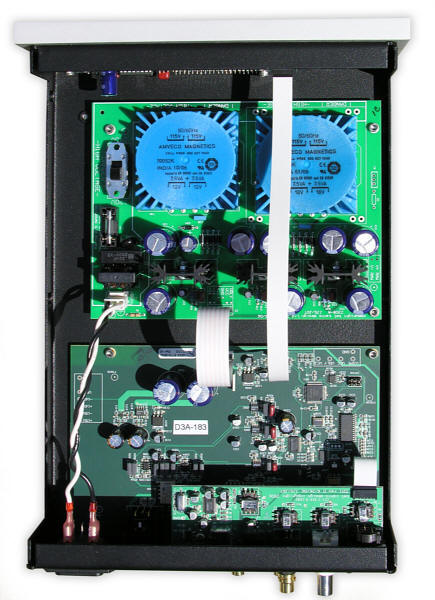
The Dac3 utilizes the 24-bit dual channel Burr-Brown PCM1792 DAC chip in a dual-differentiated multi-bit delta-sigma circuit. A 4.5vRMS true balanced XLR output provides nearly 130dB of dynamic range for a noise floor appropriate for both CD playback and use as a preamplifier. Design features included an ultra-wideband Class-A biased true balanced output buffer stage, an ultra-wideband Class A biased I/V conversion stage with selected audio grade resistors and capacitors and a single pole RC filter, 100dB of digital level control in 0.5dB steps, dual low noise toroid power transformers for digital and analog stages, 10 power regulation stages with ultra-wideband, low-noise audio stage regulation and a four layer board design for optimized ground, signal and power routing. Bel Canto claims an extremely short analog signal path with no switch contacts as well as DC coupling with no signal path capacitors.
In the listening room there's a short learning curve for both the CD-2 and the Dac3. You will want to spend some time with the manual because the fronts of both units are adorned with only a single rotary control. Through their silky smooth rotation, and by depressing it for a tactile click, all the DAC and transport functions are actuated. Around back of both units you'll select either fixed or variable output, depending upon whether or not you're using a preamplifier or going power amp direct. Most of my time was spent with both units set to fixed output, but when using either or both of the units sans a preamplifier in a system; you'd make the obvious "variable" selection. In the fixed mode my primary use of the rotary controls was for input selection on the Dac3 and track selection on the CD-2. After I'd become familiar with the CD-2 I very much appreciated its simplicity. One push for play, another for pause, two pushes for stop. Once the CD initialized, skipping from track one to track ten was a matter of a quick and painless rotation of the selector rather than the repeated taps of a track selector button. It was easier to accomplish and much faster. Of course, a full-function remote control is included with the CD-2 and a smaller less-often used remote comes with the Dac3—unless you're going sans preamplifier, in which case you'll use it to adjust system volume.
I found the open architecture of the CD-2 to take just a bit of time to get used to. Placing a CD on the spindle, or centering cone as Bel Canto calls it, requires navigating the CD over the spindle and under the thick aluminum over-hang that serves to protect the laser and CD from falling objects. If you're not careful you can scratch the top of the CD, though I never did. Once I became used to the process, I very much appreciated its simplicity. No more waiting for the disc drawer to open and close, no sliding lids open and shut. Drop a disc on the turntable, drop the self-centering magnetic clamping disc in place and hit the start button. I love it.
The first many months of my time with the Dac3 had it connected to my Accustic Arts Drive 1 transport and the sound was exquisite. The sonic signature of the Dac3 is, without a doubt, cut from the same cloth as Bel Canto's e.One Ref 1000 mono block amplifiers. Words like smooth, sweet, robust, powerful, full-bodied, poised, and controlled leapt to mind. And just like the Ref1000 amplifiers, the dominant word is presence. I just can't get away from that word when I'm using Bel Canto gear. The Dac3 gives the presentation of a presence so solid that you feel you can cut it with a knife. You don't hear through Bel Canto, you see through it. It lends music an almost physical existence within the room. In that regard, the Dac3 is very analog-like. The antithesis of thin, harsh or brittle; the music is always tonally saturated with lots of meat on its bones.
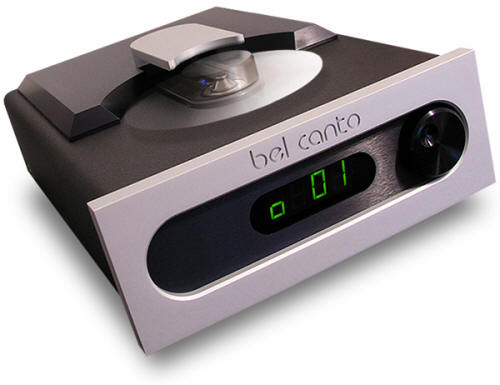
The Dac3 is utterly neutral and balanced. It's not warm, but it's not cold. It's not hard, and it's certainly not soft. It's not bright, but it's certainly not sweet or rolled off either. Were it not for the presence and sense of solidity that it lends, it wouldn't sound as if it was there at all. Rather than being spot-lit in any area of the sonic spectrum, it makes its presence known through a rock-solid projection of the music.
Detail is excellent, though it may not grab your attention in quite the same way other components do. There's no excess or exaggerated articulation anywhere to be found. The smooth sweetness predominates, but it's from the extremely low noise floor that details in the music emerge in the most natural and musically convincing of ways. Don't listen for supernatural artifacts or distracting sonic pyrotechnics; they won't be there. There's absolutely nothing "hi-fi" about the sound of the Dac3. What you will notice is that there's a sense of musical flow that evinces the illusion of real music performed in real time.
The Dac3 also has a natural sense of dynamics about it. If you'll excuse the expression, there's no jittery sense of exaggerated micro-dynamics because the entire presentation is too weighty and full; but there's a realistic sense of musical ebb and flow. With that fullness comes a sense of power, though the Dac3 never sounds muscle-bound, awkward, or clumsy. Transients have a realistic sense of snap, but never supernaturally so. The leading edges of big bass notes are clean and natural and followed by a texturally and harmonically complex body; the Dac3 tracks their decay with complete assurance.
Soundstaging is as good as anything I've ever heard, including analog. There's no artificiality imposed on recordings and each recording registers with a unique signature. When the source material is up to it, the walls disappear and the stage is deep and wide. Graduations of depth will be as good as the weakest link in your system but the Dac3 will hold up its end.
When it came time to add the CD-2 to the system the first thing I did was use it as a transport for the Dac3, but I'll get to that in a moment. After a couple months using it as a transport I tried it as a stand-alone CD player and all I can say is… get it a Dac3. On its own the CD-2 isn't bad. It's not hard, it's not brittle and it won't irritate like cheap digital may, but it can't compete with the Dac3. Call the sound of the CD-2 on its own Dac3-lite. It doesn't image or soundstage as big. It doesn't have the image solidity and presence of the Dac3 either. It's not bad, but particularly after living with the Dac3 for these many months, well, there was no reason to settle for the CD-2 by itself when the Dac3 was sitting right there. But do yourself a favor and don't forget to try it set for 24/192 operation; directions on how to do so are found at the end of the manual and they are anything but emphasized. It involves turning the CD-2 to standby and then hitting a sequence of buttons on the remote. It's easy to accomplish, if you remember that the option is there. I found it well worth the effort and if it didn't completely bridge the gap between the CD-2 and the Dac3 (it didn't) it narrowed it considerably.
My initial introduction into the system of the CD-2 as transport was completely uneventful. Quite honestly, I can't say that it did anything different than what I was used to. I couldn't discern any difference between it and my own transport and I would maybe be a little embarrassed to admit that were it not for the fact that it was replacing a transport that sold in excess of $5000 and was eventually superseded by a transport that sells for $6500. At $2995 the Bel Canto CD-2 is a great performer and a no-compromise alternative for less than half the price.
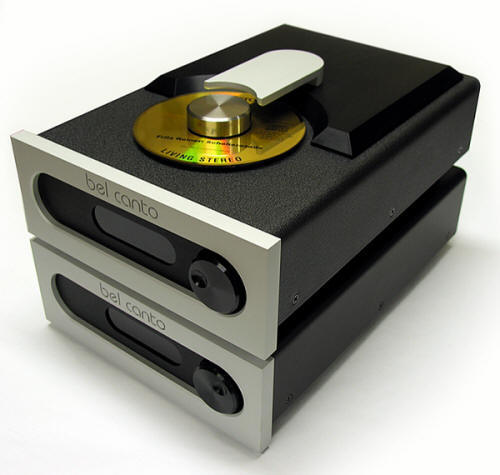
Very late in my evaluation of the CD-2/Dac3 combo I remembered something Bel Canto's John Stronczer said to me very early in the process, "I hope you have a good pair of balanced interconnects". I assured him that I did in the form of a pair of JPS Labs Superconductor 3 cables, and then I promptly forgot all about it. But when I eventually made the change from the single-ended RCA outputs on the Dac3 to the balanced XLR outputs, things changed significantly. Well, maybe not significantly, but very importantly.
One of my reviewing staples of late has been Stevie Ray Vaughn's In Step; I have it on both LP and CD. One cut common to both CD and LP that I've listened to over and over, and I know like the back of my hand, is "Riviera Paradise". Another track that I've been listening to repeatedly is on the CD version only. It's a live recording of "Life Without You". When I fired up "Riviera Paradise" the balanced connection brought forth two very obvious changes. The treble was considerably better illuminated with greater transient attack and more highly demarcated decay as well as greater textural resolution and much greater dimensionality. I guess in relation to everything else the CD-2/Dac3 combo was producing, the difference was rather small once I switched to balanced operation. But considering how many times I've heard this cut on various speakers, with different amplifiers and even on vinyl, the difference was significant and stunningly eye opening. I listened to the cut over and over as I was enjoying the newfound sophistication in portrayal of Chris Layton's cymbal work. Without a hint of added edge or brightness, the cymbals took on an added degree of focus and micro-dynamic speed that brought to them a very significant degree of authenticity. There was way more there there. Even the space between the individual cymbals (and snare) was differentiated with greater acuity. It may have been a relatively minor thing within the big picture, but it was instantly addictive. And it all added up to illuminate "Life Without You" from within for a significant added dose of micro-dynamic life, spatial realism and rhythmic intensity.
Another CD that benefited greatly from this higher degree of life and intensity was David Wilson's Winds Of War And Piece. Performed by the National Symphonic Winds, this recording is best known for the huge bass drum used and its ability to shake a listening room to its foundation—if the system is up to it. But I've always found the recording itself rather humdrum; rather bland. The CD-2/Dac3 brought new life to the music through a more invigorated treble and the same aforementioned micro-dynamic rejuvenation. It was almost as if someone tilted the treble control up a notch or two, but with no added brightness, harshness or glare; just a new sprinkling of energy, life, and dexterity. Everything about the CD was now more musically demonstrative and expressive. Dimensionality not only increased but there was an added dose of air infused between the instruments and their individual delineation was markedly improved and it seemed that the noise floor had dropped. At least on this recording, the notes didn't emerge from a blacker background—on the contrary there was a great deal of illumination between the instruments and when a portion of the orchestra fell silent, it wasn't as if someone turned off the lights on that portion of the stage—the stage remained fully illuminated and populated. The musicians didn't turn off the lights and go home; they ceased playing but were still there.
As for those big drums? The Bel Canto combo doesn't disappoint. I've never heard anything in the Bel Canto line to emphasize style over substance. In fact, Bel Canto always gets the substance right before anything else. In that regard it reminds me of good analog; it always gets the body and soul of the music first and foremost. Then the way it goes about fleshing out the music has a way of intensifying the emotional involvement. I found myself listening to the last cut, "Symphonic Dance #3" three times and that's never happened before. This cut never sounded so alive before. And for as long as the duo from Bel Canto are here, I plan on going back for more.
Conclusion
When it came time to submit this review for a fact check I was asked if I'd had a chance to try the CD-2/Dac3 combination directly into the e.One Reference 1000 mono block amplifiers via balanced interconnects. It was suggested that were I able to do so, perhaps I would hear differences between my own transport and the CD-2, and perhaps other improvements as well. At first I was eager to try, but then I realized that this would be impossible. At present the system I've been using to evaluate the CD-2/Dac3 combo is bi-amplified. The signal goes from the Dac3 to the preamp and then on to the Bryston 10B active crossover and then to the subwoofers and the speakers. Bypassing the preamplifier would require the introduction of too many other changing variables and would thereby nullify my ability to attribute whatever sonic consequences I may observe. My only alternative is to mention it in passing here and allow users the opportunity to try it for themselves.
As it is, I've spent a great deal of time with the Dac3 and there's no equivocating around the fact that it's a great piece. It not only hits all of its marks with precision, but it does so in one of the most musically satisfying ways I've heard. Are there better DACs out there? Well, there certainly will be different sounding ones and as always, system synergism may account for something here. But for top-to-bottom coherency and musical integrity, the Dac3 is going to be really tough to beat. I can think of no other product that I would give as universal a recommendation to.
The CD-2 is a very interesting piece and one of great utility. If you're just getting into building a system it can get you up and running in no time—just add power amplifier and speakers. Now you can enjoy your music as you get to know your speakers. When the first upgrade bug comes along you can step up and add a Dac3 and not only will you be stunned by just about all aspects of what you'll hear, you'll truly be able to appreciate what it is that you've been building up to. In other words, you won't have to fret that you got something different; you'll know that you got something better—because you did. This is what system building is all about. The CD-2 gives you a clear upgrade path that won't have you equivocating or splitting hairs trying to decide if you just made the right move. At some point if you decide that you'd like to add a second source to your system, then and only then may you find it advantageous to add a preamp and you haven't lost any of the performance you'd paid for with the CD-2/Dac3 combination. It's all still there.
If, on the other hand, you've got a fully developed and mature system, the CD-2/Dac3 combination is a system that I can highly recommend both in terms of absolute performance as well as on the basis that it represents a very sound value. Not only does it improve upon my digital separates, it does so at a savings of roughly 40%. In terms of use and ergonomics, this is just the icing on the cake. It doesn't take up much space and it's extremely easy to use. It's most stylish, too. That's what I think anyway. I don't care what your budget is, go and get an audition of the Bel Canto e.One Dac3 and CD-2 player/transport and let me know if you disagree. John Potis
CD-2 player/transport
Retail: $2995
Dac3 digital/analog converter
Retail: $2495
Bel Canto Design
web address:
www.belcantodesign.com
